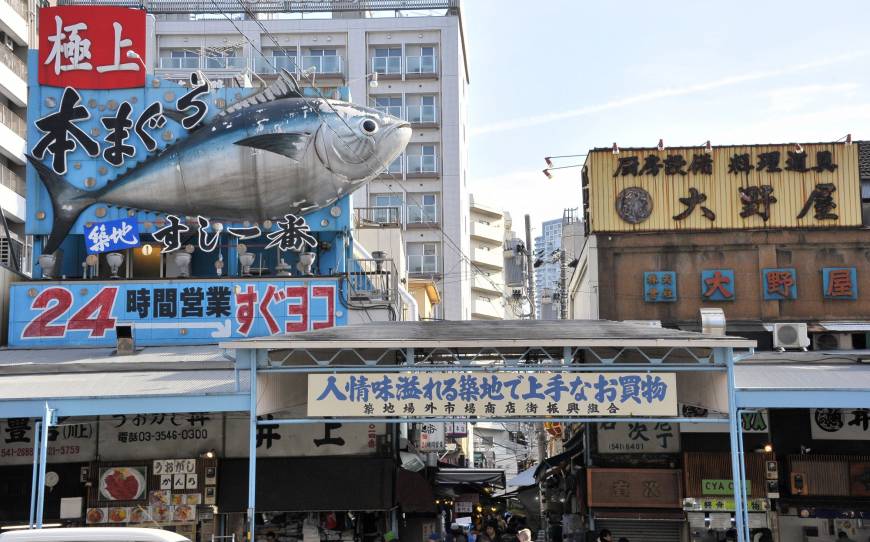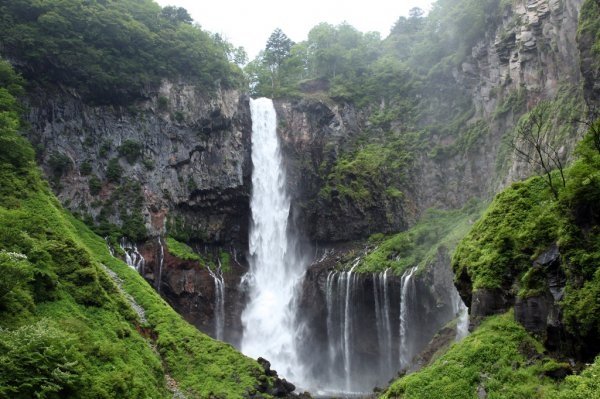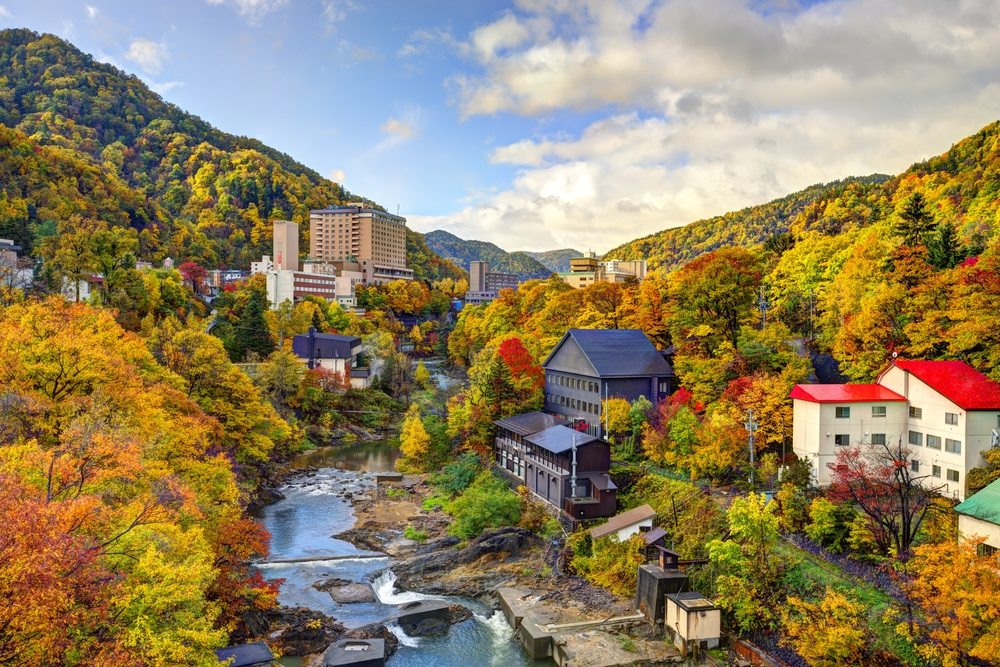Japan is a wonderfully magical country. Steeped in history, lore, and culture that predates so many modern-day places, its friendly and welcoming nature might be the only thing that rivals the traditions that still influence everyday Japanese life.
From waterfalls, volcanoes, and mountains, there truly is something jaw-dropping about the country’s ability to muster up such striking beauty and serenity in the face of sometimes quite violent occurrences. We spoke to several experts for their opinions on where in the country it is best to really be at one with the beauty of the country.
Navigate the article
#1 Mt Fuji
I’d definitely recommend that travelers spend time visiting the area surrounding Mount Fuji! Seeing Mount Fuji in person is quite surreal, however, this area has much more offer beyond typical views of the mountain. There’s so much beauty beyond the mountain itself as you can go hiking in the forests as well as see caves where silkworms were stored in the past. Some of these caves still have ice inside of them! Along Lake Kawaguchi, you’ll find a number of traditional Japanese onsens where you can experience traditional Japanese baths with a view of Mount Fuji!
Contributor: Karen Turner from wanderlustingk.com
#2 Natural Sand Baths, Ibusuki
I recommend the Natural Sand Baths in Ibusuki. It's definitely not the easiest place to visit. I visited while traveling Kyushu over a week long trip. The sand is heated with natural hot spring water and you are completely covered with the sand. It's an intense sauna feeling.
Contributor: Davin Oishi at @davinoishi
#3 DisneySea, Tokyo
Tokyo DisneySea, located on the shores of Tokyo Bay, is a park unique to Tokyo featuring seven different ports of call. Guests enter the park through the Mediterranean Harbor, which leads to six more nautically themed ports: American Waterfront, Lost River Delta, Port Discovery, Mermaid Lagoon, Arabian Coast, and Mysterious Island. The attention to detail all the way around this park is impressive. Perhaps because so much Disney is cartoon-like, the rides, buildings, and exhibits stood out as extraordinarily life-like from a small version of the Queen Mary to authentic Mediterranean-style buildings.
We truly felt as if we were stepping into a different part of the world upon entering each port.
Contributor: Katie Dillon from lajollamom.com
#4 The Golden Pavilion
The Golden Pavilion at the Kinkaku-ji Zen Buddhist Temple is an icon of Kyoto and one of Japan’s most beautiful buildings. The top two stories of the three-story structure are covered with pure gold leaf, said to purify negative thoughts and feelings towards death. The pavilion is surrounded by a magnificent Japanese strolling garden, and the sight of its golden tiers reflecting off the surrounding pond is surely one of the most beautiful sights in all of Japan.
Contributor: Scott Dye from discovercorps.com
#5 Shinjuku Gyo-En
The park blends three distinct styles: French Formal Garden, English Landscape Garden, and Japanese Traditional Garden. It is considered to be one of the most important gardens from the Meiji era. Landmarks are stunning and impossible to forget, like a Taiwan Pavilion perched along a serene pond.
Shinjuku Gyoen was constructed on the site of a private mansion belonging to Lord Naito, a feudal lord of the Edo era. Completed in 1906 as an imperial garden, it was re-designated as a national garden after the Second World War and opened to the public. The park is easy to navigate. Maps are available in English and with directions. To make sense of the garden's array of more than 10,000 trees, the map highlights interesting species.
Contributor: Caroline Duterque from jackandferdi.com
#6 Tsukiji Fish Market
Tsukiji fish market is the world's largest and handles an immense volume of fish each day. The market handles more than 400 different types of seafood, from cheap seaweed to the most expensive caviar, and from tiny sardines to 300 kg tuna and controversial whale species. Overall, more than 700,000 metric tons of seafood are handled every year - a total value in excess of 600 billion yen, approximately 5.9 billion US dollars.
The auction is the most popular part of a visit: it begins at 5:00 am, and things are generally wrapped up by 1:00 pm. It's busiest between 5:30 and 8:00 am, and tourists may visit the market daily, between 5:00 am and 6:15 am, and watch the proceedings from a designated area.
Contributor: Caroline Duterque from jackandferdi.com
#7 Tokyo Hot Springs
Japan is one of the most volcanically active places on Earth. As a result, the country is rich in rejuvenating natural hot springs and mineral resources, which have played an important role in the traditions and culture of its people for centuries. Today, these natural hot baths are the pinnacle of luxurious relaxation.
Niwa no Yu includes separate male and female onsen and outdoor jacuzzis surrounded by Japanese gardens. The water is rich in sodium chloride, a salt rumored to ease muscle pain and joint stiffness. If all the relaxation builds your appetite, there’s a restaurant on the premises. It’s a very adult-friendly environment, and children under the age of 13 are not allowed. Now, all you have to do is settle into your Shangri La.
Contributor: Caroline Duterque from jackandferdi.com
#8 SkyTree, Tokyo
The Skytree absolutely dominates the Tokyo skyline, which in the world's most populous city and full of skyscrapers, the tower is truly a star-scraper. The world's second tallest structure has an observation deck 1,480 feet above the ground; that is more than a quarter of a mile from terra firma.
The tower's structure is cylindrical to offer panoramic views of the river and the city. There are observatories at 350 meters (1,150 feet), with a capacity of up to 2,000 people, and 450 meters (1,480 feet), with a capacity of 900 people. The upper observatory features a spiral, glass-covered skywalk in which visitors ascend the last 5 meters to the highest point at the upper platform. A section of glass flooring gives visitors a direct downward view of the streets below.
Contributor: Caroline Duterque from jackandferdi.com
#9 Kegon Waterfall
Kegon Falls are spectacular 318-foot falls that flow and drop from Lake Chuzenji to the Daiya River in Nikko, Japan. They are stunning any time of year, from the bright green in Summer, to the Fall colors, to snow-capped, almost frozen in winter, and surrounded by flowers in Spring.
Contributor: Christina Vidal from jetsetchristina.com
#10 Hokkaido Region
For year-round natural beauty, head to Hokkaido. In summer, you can hike mountain trails, discover icy-blue ponds, and see fields of flowers that extend to the horizon. Check out the Furano and Biei region at this time. In winter, Hokkaido becomes one of the world's top snow destinations. A white wonderland, powder-enthusiasts from around the world flock to northern Japan for fun on the slopes. Niseko is a popular destination, with nightlife and foreign language assistance. But if you're looking for something a little less touristy, try Rusutsu.
Contributor: Delilah from fleurdelilah.com
This post was created with our nice and easy submission form. Create your post!











